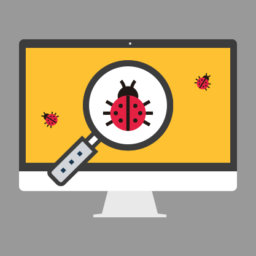A coding error usually results in some sort of bug or issue which does not work according to the project’s requirements or cause malfunction in some area. Usually, bugs, issues, or errors are used to represent the defects and indicate that something needs to be fixed instantly in order to achieve the desired results. Any sort of incorrect operation performed by the system is considered a defect and needs to be dealt with immediately for the smooth functioning of the software. Though priority of the issues can be discussed to work around the fixation process.
If testing starts from the initial phase then defects can be communicated and fixed timely but there needs to be a proper channel through which bug requests are conveyed and a proper log is maintained for future reference. The need for defect management tools arises at this point and one should look out for the tool which suits their business practices. Generally, all tools serve the same purpose but they do have a distinctive set of features that makes them unique from the rest.
Ins and Outs of Defect Management Tools
Defect Management follows a lifecycle too just like software development and one of the best ways to save the cost is to identify defects in the initial phase. The sooner issues would be recorded, the more convenient it would be to come up with a quality product by the end of the day. As issues can occur at any point in the development so testing should be performed simultaneously to deal with the unfavorable situation.
Defect Management Responsibility
Previously only the quality assurance team was responsible to manage the defects but since businesses are moving towards a cross-functional approach so the testing and development team works together to manage and track the defects. For this purpose, they are all logged in through a single tool where all updates are made. Each member has a designated role regarding the recording and management of issues. Once the issues are recorded through defect management tools then their severity is calculated based on cost, risk, and repercussions, and then these defects are assessed on the following categories.
- Severity
- Priority
- Implications
Best Practices achieved through Defect Management
Defect management comes up with continuous learning and progress where one can observe critical aspects in the most convenient way. No matter which approach or tool you use to manage defects, you need to consider the following points in order to build a solid successful foundation. In defect tracking following aspects should be considered vigilantly.
Information Gathering: Proper guidelines should exist to report a bug and it should be done in a convenient way so that testers do not have to spend a good amount of time just to report a bug through a system or tool. Only relevant and necessary information should be required. Defect management should be done in a simple way but at the same time, it should not be oversimplified so that important information slips through it.
Reproduction: In order to verify if a defect is fixed or not, a user should try to reproduce it.
Scheduling: Once an issue is identified, it should be reported on a priority basis based on different factors. Defects are prioritized and scheduled based on their severity level and their impact on the whole system. If an issue is acting as a bottleneck then it would be assigned high priority.
Communication: There should be a proper communication channel developed among team members through which they can communicate back and forth. This constructive dialogue enables team members to share their ideas which can aid in quick solutions and improved understanding.
Environment: The environment in which testing is done also plays a vital role. There are certain errors that only exist in the specific environment so testers need to ensure that they are performing testing in all sorts of the required environments to deliver a quality product.
Evolve with Defect Management
Defect management asserts techniques, tools, processes, and incentives. This activity helps the organization to identify all loopholes in the system being developed which are recorded through proper channels and are monitored from time to time. A business that does not incorporate defect management tools faces various challenges to maintain quality along with employees’ productivity. If these tools are implemented then product development can be maximized which helps to take necessary measures to overcome future challenges.



